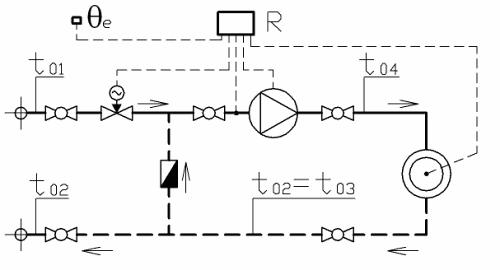
What is the difference between an ejector and a vacuum pump? How does an ejector work in a power plant? Due to the pressure drop of the motive flui it will create a low-pressure zone before the mixing chamber. The main function of the ejector is to extract air and no condensate gasses from a closed system.
It removes air from the condenser and provide vacuum. The amount of air extracted at the time of starting is more as compared to running unit. Depending on the application, an injector can also take the form of an eductor-jet pump, a water eductor or an aspirator. An ejector operates on similar principles to create a vacuum feed connection for braking systems etc. A Transvac Ejector (venturi, eductor, jet pump) operation is based upon Bernoulli’s Principle which states: ‘When the speed of a fluid increases its pressure decreases and vice versa’.
All ejectors operate on a common principle. The single stage ejec- tor , in its simplest form, consists of an actuating nozzle, suction chamber and a diffuser. The term jet ejector describes a device in which a pumping effect is achieved using a motive fluid. A jet ejector requires no mechanical drive and has no moving parts. This basic principle applies to every jet ejector in different models and ranges of application.
The application determines the design of the flow section. Ejektor je proudové čerpadlo. Slouží k dopravě tekutiny (obvykle vody, ale též vzduchu) využitím kinetické energie jiné tekutiny (vody nebo páry). Používá se k vytváření podtlaku nebo k čerpání vody.
Steam Jet Ejectors , the largest vacuum producing devices available are used in the most demanding of applications. Virtually maintenance-free with no moving parts, they can be fabricated from. Vzhledem se podobá potrubní armatuře a má analogickou funkci s čerpadlem. Zdrojem hnací energie je primární (pracovní) tekutina. Z toho důvodu se mu také říká „proudové čerpadlo“.
Ejectors (also known as jet ejectors ) fit the definition of pumps and compressors (Section .2) but they have no moving parts. The energy required to increase the pressure head of a fluid is provided by another fluid (motive fluid) moving at high velocity. The principal application of ejectors in the food industry is their use for drawing a vacuum and for thermal vapor recompression in.
An ejector is based upon Bernoulli’s Principle which states: ‘When the speed of a fluid increases its pressure decreases and vice versa’. The ejector uses a converging nozzle to increase the fluid velocity to transform high static pressure into velocity pressure. The compressed air is supplied through connection (A) to ejectors. It flows through the venturi nozzle (B). The air is accelerated and compressed during this process.

After passing through the nozzle, the accelerated air slows down once again and a vacuum is created. A venturi creates a constriction within a pipe (classically an hourglass shape) that varies the flow characteristics of a fluid (either liquid or gas) travelling through the tube. As the fluid velocity in the throat is increased there is a consequential drop in pressure.
Injektor (prema lat. iniectus, particip prošli od inicere: ubaciti), u strojarstvu, je uređaj za napajanje parnih kotlova napojnom vodom. Djeluje na istome načelu kao i ejektor , slične je konstrukcije i nema pokretnih dijelova. With high and low pressure flow loops, along with multi-phase and sand slurrry capabilities, we can guarantee the performance of your Ejectors.
Online Ejector Sizing Tools. The very latest Ejector designs are now available at the click of a.
Žádné komentáře:
Okomentovat
Poznámka: Komentáře mohou přidávat pouze členové tohoto blogu.